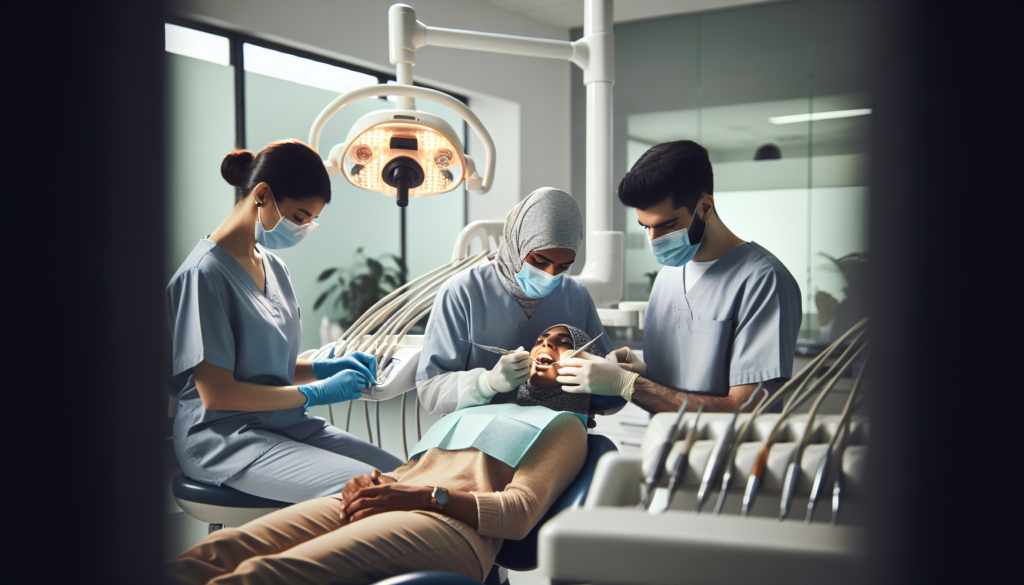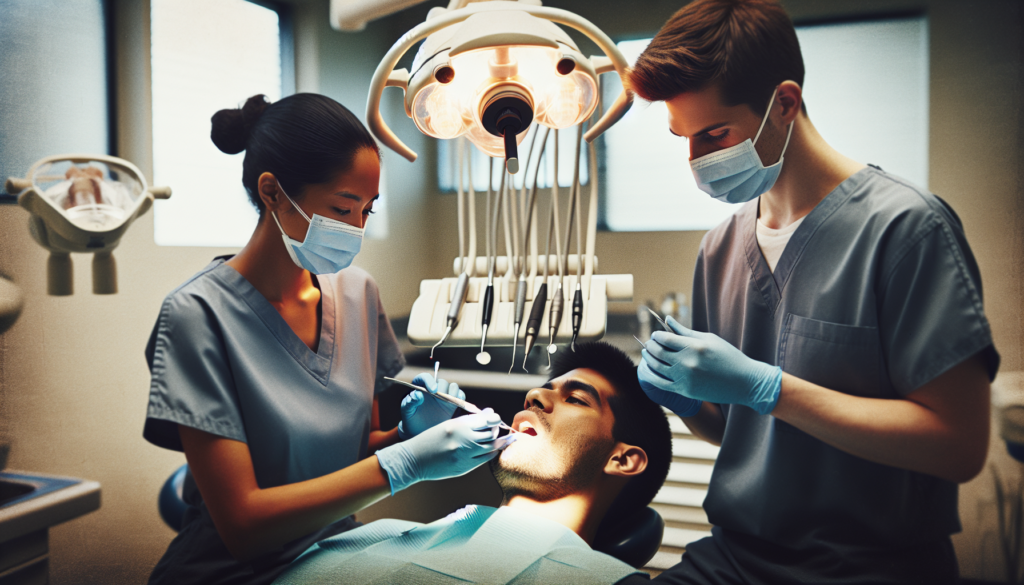Transform your health habits today — because building strong routines, much like maintaining oral health, starts with small consistent actions. Inspired by human nature and the principles in The Habit Method.
Young Adults Struggle With Dental Care Due to Cost Barriers
Introduction: The Rising Cost of Dental Care for Young Adults
Dental care has long been recognized as a critical part of overall health, yet today’s young adults are finding it increasingly difficult to keep up. Rising costs, shifting insurance landscapes, and economic pressures have made routine visits feel like a luxury rather than a health necessity.
According to recent research, young adults now face the highest rates of missed dental appointments compared to other age groups.
— News-Medical.net
Many in their twenties and thirties are skipping dental checkups not because they don’t value oral hygiene, but because they simply can’t afford professional care. These skipped visits are setting the stage for long-term oral health challenges that could have been prevented early on.
The Financial Reality: How Cost Barriers Affect Dental Visits
One of the main reasons young adults miss dental appointments is the ever-growing cost of services. Inflation has raised prices across all types of care—from cleanings and fillings to crowns and root canals.
- Rising care costs: Even basic preventive services like exams and X-rays can cost hundreds of dollars without insurance.
- Limited insurance access: Many gig workers, freelancers, or recent graduates lack employer-sponsored dental insurance.
- Student debt conflicts: Loan payments leave little room in the budget for elective health expenses.
These factors combine to create an access gap that disproportionately affects people in early adulthood, a phase when finances are often stretched thin.
The Consequences of Skipping Dental Care
Delaying or skipping dental care has long-lasting health implications. Small cavities can quickly evolve into more complex and expensive problems, while gum disease can silently progress toward tooth loss.
Beyond the mouth, poor oral health has been linked with systemic conditions like heart disease, diabetes, and inflammation. The cost-saving decision to avoid a routine cleaning can ultimately lead to far greater medical expenses down the line.
- Untreated decay often leads to pain and infection.
- Gum disease can advance to cause tooth and bone loss.
- Routine prevention saves money overall, protecting long-term health and financial stability.
Why Young Adults Struggle With Dental Insurance Coverage
Insurance coverage is another common barrier limiting access to care. Many employers no longer include dental benefits in their standard health plans, especially among part-time or gig-economy positions.
- Coverage gaps: Marketplace plans often provide limited dental benefits, with high copays or annual limits that deter visits.
- Age cutoffs: Individuals aging out of family insurance plans at 26 suddenly face full out-of-pocket costs.
- Uninsured populations: Millennials and Gen Z adults are the most likely to be uninsured for dental care nationwide.
Understanding how dental insurance works—and seeking supplemental or student-centered options—can help close these gaps. Clinics offering transparent pricing and flexible plans can also ease this burden.
Economic Pressures: Inflation and Budget Priorities
Economic instability has pushed dental care even further down the priority list for young adults. Choosing between rent, food, and professional care forces difficult trade-offs.
Surveys show that nearly half of young adults postpone dental appointments due to competing financial demands like housing and daily living costs.
— Health Policy Reports
Inflation increases the cost of everything from dental materials to clinic operations, and those costs often trickle down to patients. However, preventive visits typically remain far cheaper than emergency procedures or restorative treatments down the line.
Expert Insights: Solutions to Improve Access
Dental health experts agree—policy solutions and innovative models are needed to ensure affordable oral care. These include expanding community dental programs, offering low-cost preventive plans, and incentivizing employers to include dental coverage in their benefits.
- Community-based clinics: Provide low-cost or sliding-scale options for underserved populations.
- Preventive dental education: Encourages earlier visits and better at-home hygiene habits.
- Dental insurance reform: Expands coverage and accessibility for young adults entering the workforce.
Efficiency and education go hand in hand—greater awareness helps people make better preventive choices instead of waiting for crises.
How Young Adults Can Find Affordable Dental Care Options
Fortunately, several avenues exist for those seeking affordable dental solutions:
- Dental schools: Offer supervised care at significantly reduced costs.
- Community health centers: Provide sliding-scale fees for cleaning and basic procedures.
- Discount plans: Membership-based alternatives that reduce standard office fees.
- Nonprofit programs: Many organizations host free dental days or mobile clinics for low-income individuals.
- Preventive self-care: Brushing twice daily, flossing, and avoiding sugary foods minimizes the need for costly interventions.
Even small consistent steps can make a big difference. For a deeper dive, see our related article, “Affordable Dental Solutions for Students and Young Professionals.”
The Bigger Picture: Investing in Long-Term Health
Regular dental care is not just about clean teeth—it’s an investment in lifelong wellness. Neglecting oral health can ripple into physical, emotional, and financial consequences later in life.
Young adulthood is the perfect time to build lasting habits. Establishing relationships with trusted providers, scheduling preventive checkups, and budgeting for care can all protect against costly treatments in the future.
Investing in preventive dental care is a form of self-care that pays dividends for years to come.
— Public Health Dentistry Journal
Conclusion: Breaking Down Financial Barriers for a Healthier Generation
Young adults today face tangible financial barriers, but awareness, early prevention, and creative solutions can help bridge the gap. By prioritizing oral health—even within tight budgets—this generation can set the foundation for better overall wellness and long-term financial security.
If you’re ready to take control of your dental health and lifestyle habits, explore behavioral frameworks in The Habit Method — your guide to creating sustainable, healthy routines that last. Start your transformation here.
Frequently Asked Questions
1. Why are young adults skipping dental visits?
Many young adults are skipping visits primarily due to cost, lack of insurance coverage, or economic priorities like student loans and rent. The absence of employer-sponsored benefits for new graduates also plays a significant role.
2. What are the risks of delaying dental care?
Delaying care can result in cavities, gum disease, and infections that worsen over time. Minor dental problems can become expensive treatments when left untreated.
3. How can someone find affordable dental care without insurance?
Options include visiting dental schools, using community health centers, signing up for dental discount programs, or taking advantage of nonprofit and charitable dental clinics.
4. Does preventive care actually save money?
Absolutely. Preventive care—such as regular cleanings—helps detect issues early, reduces treatment costs, and protects against more serious and costly complications in the future.
5. How can I build consistent dental health habits?
Habits form through small, daily actions. Brush twice daily, floss, schedule reminders for cleanings, and stay mindful of nutrition and stress management. Pairing these routines with principles from The Habit Method can reinforce lasting self-care behaviors.
Your healthier routine begins here — small changes today lead to confident smiles and lasting wellness tomorrow.
Post Disclaimer
DentalUp is for educational purposes only and cannot accept personal dental information such as x-rays, photos, or treatment details. See full disclaimer here.




